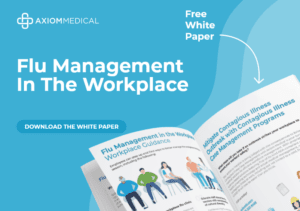[00:00] – Holly Foxworth
Well, good afternoon. And thanks for joining us for Bitten By A Snake, What To Do! Webinar. My name is Holly Foxworth, I’m a registered nurse. I’m also the marketing manager for content here at Axiom Medical. And of course, I have the infamous Dr. Scott Cherry. He’s our Chief Medical Officer here to discuss all things snake bites. And so we’ll go into some do’s and don’ts we’ll do some true or false, factor fiction, etc. So I think there definitely will be something for everybody that you’ll get from this, for sure. Not to mention our internal challenge we had this week of how many different times Dr. Cherry, could you put a snake term into the sentence? So it’s like a challenge all day. So we’d have everything from slither to scale, everything. So we’ll see, we’ll see how good you can do it yourself. All right.
So on a more serious note, though, I did want to mention one other thing, though, that is somewhat of a change than what we initially planned. So we have noticed there’s a significant number of changes that are going on, that’s really gotten our attention in terms of alarming trends, where you’re looking at the number of lawsuits that the employee is placing against the employer. So I don’t know if you guys have seen those numbers, but they are significant. And so red light should be glaring. And you should be hearing alarm bells as well, because this is an issue, is a problem. And so they’re looking at everything that’s going on, the employees are really looking at are they being exposed to things in the workplace? Is this a safe work environment? And that’s really what’s driving all of these lawsuits that are there.
So again, we are going to change up our webinar schedule and actually put that one in for this next, it will be two weeks from now, but we’re going to put together a diverse panel. It’s not going to be industry-specific. We’re going to have all different industries that are going to be represented and bring in all of the C-Suites to actually discuss not only what’s going on, the trends that we’re seeing, but actually some of the plans that they’re putting in place at their own organizations to protect the organization, but also themselves. We talked about that. You’ll see C-Suites and everybody all of a sudden they’re at the top. And again, it’s a great place to be until all of a sudden something goes wrong and it hits the press. And all of a sudden we’ve got a narrative that you have to deal with. And that is usually where you’ll see that all of a sudden they move down to that deal list of being demoted. So definitely a lot of good information. We’re going to have some great topics, some really good strategies. I think that you’ll be able to look at and maybe model some of your own practices. So don’t forget to attend that, we do have actually that that’s sitting right there on the right side of your screen, it should say register now, you’ll just press that button that will actually get you registered. You don’t have to enter any additional information. Again, even if you can’t come, go ahead and just press it. And we will send you an on-demand recording because we want to make sure everybody’s kind of protected in this area. All right. So I think that may do the majority of the announcements. Obviously, we’re seeing some changes in the Delta variant that is moving in the direction we’re not as excited about. And so we’re seeing an uptick in some of those vaccines. It’s truly important if we want to push those as much we can, so I’ve included that in the resource list, the white paper that goes along with that. Any questions that you have specific to that or anything that we can help with, obviously, let us know, we want to make sure you’re taken care of there. Dr. Cherry, how about we go ahead in case there’s somebody new that doesn’t know you, how about we have you introduce yourself, tell us a little bit about what you do, and then we’ll start talking about snake bites.
[03:34] – Dr. Cherry
Good afternoon, everyone. My name is Scott Cherry. I’m Axiom Chief Medical’s Officer. My professional background is I’m board-certified in preventive medicine, public health, and occupational environmental medicine. And I’ve been supporting the military, government, and corporate operations for the past 15 years For this topic, I would just share my military experience where I was actually a US Navy corpsman or emergency medical technician is probably better translated into civilian terms for four years. And then I was a military medical officer for nine years. Some of those years were with operational units. And so we did a fair amount of wilderness medicine, which this topic does focus on, which is a nice change from COVID and some of the other topics we’ve been doing the past year.
[04:31] – Holly Foxworth
Yeah, absolutely. I was telling, I think one of our crew, that it’s surprising that the clients that we have, they’re always asking about snake bites every year, and usually, we have the top five questions that come up, but we’ll definitely address those in here today. And obviously, if you have any questions, please make sure that you can just type those down there in that chatbox, and we will get to them towards the end of the presentation. All right. Well, Dr. Cherry, let’s hop into this. We even put a scaling reference in here. So we got it on your first slide. So we got the snake reference in it from the very beginning. But anyway, so talk to us about what snake bites are they really serious about? Are the anxieties that we all probably secretly have, but nobody wants to admit to, are they legitimate, how often does this happen, etc.?
[05:26] – Dr. Cherry
Yeah. And I think that’s probably why we get a lot of questions about this frequently and annually because I always look at severity and frequency. That’s kind of the common military assessment. You look at how common something is and how severe it can be. So this one falls under severe, but uncommon. We’re not used to it. And it’s just kind of a scary topic. When you look at the numbers here, 8000 snake bites a year in the US amongst 340,000,000 people, there’s essentially no snake bites per person. And then if you look at the fatalities of five, that’s very rare, obviously, for those people, it’s massive. But if you look again across the population, it’s a very rare outcome. So if you’re looking at five deaths, say there are 5000 snake bites a year, it would essentially be a case fatality rate of one per thousand. And so that just kind of gives you –
I think people have been more indoctrinated into epidemiology where they see case fatality rate for COVID. And so what’s interesting, though, is although death is so – if we just take away ok snake bites are rare. But of those 8000 snake bites, death is quite rare, but actually, there’s a fair amount of morbidity associated with it. So up to 44% chance of having some lasting disability with the extremity or wherever was bitten. Usually, it’s lower extremity, upper extremity. I’ve seen or not seen, but heard of a worst-case scenario, getting bitten in the face, which is quite scary for a number of reasons. But from an epidemiological standpoint, this is an uncommon event. Unfortunately, it’s very rare to die from a snake bite in the US. And so I just want to actually refocus our audience, too. We’re talking about snake bites in the US, which, fortunately, it’s much easier to do from a medical perspective. When you go outside the US, the epidemiology of snake bites drastically changes the fatality. The types of venoms are much different, and I think those hit the movies, and that’s probably what’s driving a lot of concern. But, yeah. So this is really an uncommon, but yet relatively severe event.
[08:19] – Holly Foxworth
Yeah. anacondas everywhere. You know, I’ll say though that it’s like we say that it doesn’t occur, but it only takes an experience for all of a sudden your laser-focused on what’s going on. I was told that over the July 4th holiday that we actually had – my neighbor had a copperhead bite, and then we actually had a snake that was outside in our backyard. Obviously, that one wasn’t a copperhead. But it’s like when you hear that all of a sudden everybody’s walking around on tiptoe’s, is there a snake anywhere? We make sure we’re not on top of it, but definitely something to keep in mind and it would be an issue. And just to clarify on that part about the long-lasting injuries, so you’d mentioned that you usually see that in the lower extremities. So is this something then that becomes a lifelong type of issue that many people are dealing with once you’ve had that initial bite, or is it something that is effectively treated and officially gets better with a range of motion, things like that?
[09:18] – Dr. Cherry
It can go both ways. Sometimes you can have even, like a small amputation, depending on how soon you get treatment, which type of venom it is, and how much venom is injected. But then a lot of times, too, people totally resolve and get back to 100%. So it’s quite case-specific.
[09:43] – Holly Foxworth
Yeah, definitely. And then what type of conditions? We talked about this a lot in COVID about some of those comorbidities and pre-existing conditions that make them a little bit more the outcome. So what type of conditions might someone have that could pose an issue if they were bitten by a snake?
[10:06] – Dr. Cherry
So if we kind of go back to the vulnerable populations that we talk about in COVID, you can frame it in a similar way. So the very young and the very old are more sensitive or susceptible to snake bites. And then really those with circulation issues already, heart disease. They are the ones that can succumb to snake bites. When I think of venomous snakes, the venom does two specific things to the body. One, it attacks the blood. It’s called a hemotoxic venom. So it literally will prevent your blood from coagulating normally. And so you can’t form clots normally. So you actually see a lot of quite destructive. The venom is very destructive towards the blood. So you’ll see people bleeding from different spots. And then there’s also a neurotoxin, which is a toxin that attacks the nerves. And so it can hit your peripheral nerves where you get those paresthesias and all that. But you can also get some central nervous system nerves, so it can affect your heart rate and central nervous system things like that. So really there’s a whole continuum there of what you can see.
[11:38] – Holly Foxworth
Good information, alright. So then whenever we’re talking about the snake bites. So there’s a difference between snakes, correct?
[11:49] – Dr. Cherry
Say the last part again, sorry.
[11:52] – Holly Foxworth
I was saying there’s a difference between the types of snakes that you would be bitten by and what those outcomes would be, correct?
[11:59] – Dr. Cherry
Correct. Again, these are the most common snake found in the US. And the first three are the pit vipers. And so they have this sensor behind their nose that can detect infrared, so they can sense body heat, things like that without actual visual. And so the rattlesnakes, the copper heads, cotton mouse, and water moccasins essentially have a very similar venom. And so it’s both that blood toxic, that hemotoxic, and that neurotoxic mix and the coral snakes, actually, a lot of times will just have the neurotoxic. And that’s important because people can get bitten. And then again, if it’s the first three, they’ll see the bruising and some of that sequela already. But with coral snakes, someone could get bitten and then actually have no symptoms. And if the neurotoxin is delayed to release, they may not get symptoms until it’s too late, where it affects their breathing, etc. So in general, you do want to seek medical attention by experts and snake bites for smaller facilities, they will actually call out to poison control toxicologist, emergency specialists that are really well experienced with snake bites.
[13:38] – Holly Foxworth
Good information. Yeah. So before we get to some of the symptoms that go along with this, what could you tell us about what is it that we could do, especially in the work environment, to prevent a snake bite from occurring, what could you do to lower your probability?
[13:57] – Dr. Cherry
You know, I think what was very apparent to me, I grew up in the city, and when I joined the military very quickly, we were all put into this environment that wasn’t the city anymore. It wasn’t necessarily an austere environment yet. But we were always told to be aware of our situation, have situational awareness, they call it. But as we would work in different areas, regions, or countries, leaving your shoes out by your bed and just putting your feet into your shoes, may be commonplace in your house here in the US.
But if you go to other places, people have different customs and norms to which they are always aware of different things. So you really want to be alert, and especially if your surroundings have changed. So if you go on vacation or if you’re starting a new job and you’re actually traveling for work a lot, you want to meet with a supervisor or someone that is experienced in that region to know about the specific hazards, the environmental hazards, because that’s where I think a lot of people get taken by surprise. And so our clothing is actually our first form of protection. So in the military, we would always wear our fatigues, our boots. And so it’s really our first form of protection with the elements, but also with wildlife. And you just want to be quite aware when you’re traveling across new ground, if you’re going to be reaching down for something if it’s been something that hasn’t been touched in quite a while, if it’s been very stagnant or complacent, things can be hiding there that you won’t see.
The snakes are quite great at camouflaging themselves. And so unless you’re actively looking, your passive alert system will not a lot of times, they won’t be brought to your attention until maybe they strike at you. And then I think we’ve all had that where through evolution, I think we’ve been genetically programmed to be scared of snakes. And so we may jump reactively to something that looks like a snake, but that isn’t. But that’s kind of a little bit late. You want to be very proactive and being aware of your surroundings.
[16:31] – Holly Foxworth
For sure, so in terms of is there any type of clothing that you would want to wear or some things that maybe you could do besides just being aware of what’s going on that would decrease your chances should you step in the wrong spot or things like that?
[16:45] – Dr. Cherry
Yeah. Especially in the Southwest, the desert. It was very customary, even if you weren’t in the military to wear boots, thicker boots, thicker shoes. Here in Houston or where I grew up in South Florida, sometimes people would be out in sandals. It’s very hot out but it’s quite hot in the Southwest, but people are wearing much more protective footwear and clothing. And so I would say you want to try to blend into what the region is doing for themselves or if there’s a uniform, I think for our corporate clients, like having a uniform or some standards of dress for certain areas, whether its heat stress or environmental stresses, with sunburn and things like that, you want to be able to basically be doing what the locals are doing for protection.
[17:54] – Holly Foxworth
Yeah. One other question that has come up in the past, it just came to mind was, so where is it that you would go to get that information if you’re going to a different area and you wanted to educate yourself on what type of reptiles would be there or what would need to be on your radar to look for? Where would you get some of that type of information?
[18:16] – Dr. Cherry
Can you say that last part of the question again? Sorry. I have a little bit of background noise.
[18:21] – Holly Foxworth
Yeah. So if you were traveling to a different area, maybe that you weren’t familiar with, where would you get information about reptiles that may be specific to that area that would need to be on your radar and look for.
[18:35] – Dr. Cherry
Yeah. So if you’re going international, you can go to the State Department website and they actually have a complete analysis for your travel about security risks, but also medical risks. All that, where the embassy will be at. I would recommend those traveling internationally, especially if it’s an austere area or if it’s an adventure. You can actually do a travel medicine appointment with a physician that is trained in that. And there are lots of resources that we utilize that give you extra insight into that. If it’s inside the US, the CDC probably does have an arm that deals with the different regions and domestically.
[19:24] – Holly Foxworth
Yeah, good. Okay. Alright, so let’s talk then about if you were to get bitten, what would be some of the symptoms that you could potentially have?
[19:34] – Dr. Cherry
Yeah. So really, it’s a mix of local effects, where you’ve been bitten and then systemic effects. So that’s the effects that the venom may be taking effect and it’s affecting your whole system all of your organs versus just right at the site. I do have to say, too, if I was bitten by a snake, I’m going to get symptoms from just my psychology freaking out. And so that’s always a component of this. When I’ve dealt with mass casualty events, there’s always a lot of worried well. This is not the case, but that definitely needs to be acknowledged that people are going to be very anxious. And so you’re going to have a lot of adrenaline. So that’s going to have systemic effects. But really, we can just start from the local effects where you’re going to have classic puncture marks. A lot of times in dermatology, you’ll see someone with a rash and some type of allergy. But if you see actual puncture marks, then you’re much more worried about some type of insect or snakes, spider bite, things like that. And then you’re going to have local redness swelling. If you start seeing significant bleeding and blistering, then you’re definitely going to be concerned that this was a venomous snake, and you want to start taking pictures, perhaps. And I know we’re going to deal with that later, but you’re going to have a fair amount of tenderness and pain right at the site, and you might have some tingling if some of the peripheral nerves were nicked there. If you also have some more systemic involvement, you’ll start feeling nauseous. And then you may even have some vomiting and diarrhea, labor breathing. You’re going to fill your heart rate spike. And then again, if there’s a significant hemotoxic venom there, you can start feeling light-headed dizzy from low blood pressure, a weak pulse, disturbed vision, a metallic taste in your mouth. Parts of the neurotoxic effect of the venom can actually affect your autonomic nervous system or fight or flight. Our autonomic nervous system actually innervates all of our organs as well. And so you can actually have some salivating and sweating from those stimuli, as well as numbness, tingling. And what’s interesting when you read about rattlesnake bites is that there’s actually this distinct muscle twitching in the face. And so it’s interesting. They call it a pathognomonic sign where it’s a hallmark of a rattlesnake bite. But essentially you’re going to get a mixed bag of local effects and then potentially systemic effects. So if you’re getting those systemic effects, then you really have a high likelihood that you’ve been bitten by a venomous snake.
[23:08] – Holly Foxworth
Yeah, wow. That’s great. So in terms of the time frame of when these symptoms would develop, is there a general range of when you would see – how long would it be before you would see some of those systemic effects that would be taking place?
[23:26] – Dr. Cherry
So I think for most US snake bites, you’re going to see this very step-wise continuum where you’re going to see some swelling localized, and then within 15 minutes, it’s going to start spreading. But some snakes can actually have a delayed onset. I might have spoken about that earlier where you might not have any effects early on, and then hours later there’s this delayed neurotoxic effect. And so, you know, really, the main point here is if you are bitten is to get a professional medical assessment.
[24:07] – Holly Foxworth
Definitely. Alright, so the next thing I wanted to ask you about actually was something that comes up a lot as well, which we always get the question, what is a dry bite? What is the difference between a dry bite?
[24:22] – Dr. Cherry
It is an interesting issue to discuss because the way I think about it outside, if it’s just Scott Cherry walking down the street, it’s like, oh, there’s a snake., it’s probably venomous. And if it bites me, it’s probably going to envenomate me. But actually, and I haven’t looked this up in a while, so I’m probably rusty on these details, but, you know, probably venomous snakes. I’m not sure the proportion of all snakes, so I probably shouldn’t quote something, but I’m sure there’s some breakdown. But even if you’re bit by a venomous snake, it may not actually release venom for a number of reasons. It may be out of venom or it may not have felt it was that critical because the venom is actually a very interesting chemical compound. It’s very costly for the snake to create, so they do want to preserve it for their use. I don’t think they have unlimited venom production capability, but there can be times where someone’s bitten and then there is no venom. So that is a potential outcome, even if you think you’ve been bitten by a large snake, or sometimes there’s this myth about a small snake biting you with too much venom, things like that. But yeah, you can actually get a dry bite.
[25:56] – Holly Foxworth
Okay, alright, good. And then let’s see, one thing going into some of this about what to do if you’re bitten, just to clarify. So any event that you were to be, you had a snake bite, but maybe it’s dark outside and you didn’t see what the snake was, what type it was, you didn’t see it after it occurred, etc. Should you play it safe and always assume that it could be a venomous bite or what would be your recommendation there?
[26:25] – Dr. Cherry
Yes, I would. You want to be on the side of caution, and especially if you’re in an area that is well known for snakes. But even if not, it would just be a shame to let the toxin work its way further and do more damage without your knowledge. And that’s especially the case with kids or adults that cannot communicate well or their consciousness may be altered. And so I think there’s a broad question for preventive medicine where you see a bat in a room and there’s a baby and so it’s like, do you worry about rabies? And it’s like, well, you have to default to worrying about rabies because the baby can’t tell you. So it’s kind of interesting. But if you’re bitten by a snake. I think remain calm should be for anything that happens to you. Even if nothing is happening to you, you should remain calm. But I mean, I’m sure that’s easier said than done, but with snake bites is actually much more important to stay calm. I think when we’re driving our cars, we tend to, you know, at least I do get upset too easily. But if you’re envenomated by a snake, if you become very agitated, what’s going to happen is you’re going to help circulate that venom quicker. So that’s why remaining calm is probably more important than just for the daily philosophy and mental health.
And so yeah, if you’re at work, you definitely want to let your co-workers know, your supervisor. And really, it’s time to urgently get seen at an ER. And so what’s interesting here is I think what’s helpful is this last bullet point because again, you want to prevent anything that increases your heart rate. So obviously getting agitated or concerned, running to your car, running to your supervisor is going to increased heart rate. But also some of our vices, like cigarettes, caffeine, coffee, are going to raise our heart rate. And so that’s going to help move that toxic venom around. So for instance, the resting heart rate classically it’s around 60 to 100. But most people are around 80 beats per minute. And so you can quickly double that when you get agitated, concerned, excited. And so you’re basically doubling the circulation per minute. So that’s huge. And so the other part is thinning your blood because the hemotoxic venoms will actually start blocking your blood’s ability to create blood clots. Alcohol and aspirin do similar things from a high level. The coagulation cascade is very, very complex. But you can just think of it like alcohol, aspirin and a lot of the snake venoms are basically blocking that coagulation cascade of events. So if you cut yourself, you’ll bleed a lot longer, and you actually may have spontaneous bleeding, too, from snake bites. So that’s not good.
[30:27] – Holly Foxworth
And for those that maybe aren’t familiar with what spontaneous bleeding would that be where the blood’s just coming out of your nose and things like that, just from all the different areas?
[30:36] – Dr. Cherry
Yep.
[30:40] – Holly Foxworth
Alright, let’s see. So you talked about the wilderness before. Talk to us why, you know, I love a good mnemonic. But tell us why this makes so much sense for when you’re in the wilderness when you don’t have access to some of the resources that you might have in other scenarios.
[30:58] – Dr. Cherry
Yeah. You know, and I think this is why the epidemiology that we talked about earlier about how death is uncommon with five deaths per year can be quite reassuring if you know that fact. And so obviously, that’s a great piece of information to share to someone who’s been bitten. This acronym is great for snake bites. So it’s R I G H T, right. So you want to reassure and then you want to immobilize the bitten extremity, and that’s another way of preventing that toxin from spreading faster. So if you’re moving that extremity, we have arteries and veins. So the heart is powering the arteries with blood pressure. So arteries are taking oxygenated blood to our muscles. They filter through capillaries, deliver oxygen and nutrients to the capillaries. But on the vein side, returning to the heart, it’s actually a passive system. The veins have a one-way valve. So it’s actually our muscles contracting that actually create that blood volume returning through the veins. And so that’s why, if you see someone standing for a long time, they tend to pass out because they haven’t contracted their leg muscles in a while. So they’re blood poles. We see that a lot in the military where you’re standing at attention for a while. But getting back to our acronym, GH is to get to the hospital. And then basically you want to provide as much information as possible to the provider at the ER, just to give them as much insight as possible. A lot of tips include taking pictures every 5, 10, 15 minutes, especially if it’s changing frequently because that will give the doctor a lot of insight into what type of toxin was released and maybe how severe. And then, of course, any symptoms and things like that.
[33:23] – Holly Foxworth
Yeah, definitely. I think we actually have some true or false that are coming up next. I see that we’re getting some questions in. So go ahead and type those in if you have a question for Dr. Terry, and we’ll get to those as soon as we follow with the true or false here. But jumping into this first one, so true or false, you should always have something with you that could be used as a tourniquet to keep venom in extremity bitten by a snake.
[33:52] – Dr. Cherry
Yeah. I think this one it’s hard to let go of, but really, the wisdom here is to not use a tourniquet unless you’re actually an expert in this. It’s for a number of reasons, but you can really make things worse by applying a tourniquet if you’re not an expert at this. But I think it’s so common in the movies, and it seems like common sense as well. But really, it’s not part of the RIGHT acronym. So if it’s not part of that right acronym, then recommend don’t do it. Now, if you get to an area that is just notorious for snakes. You may be given some training or indoctrination on things, and maybe that’s different if it’s a very unique case somewhere. But right now we’re talking about the US snakes, which, again, are not usually that deadly. So really, the tourniquet is not advised here in the US.
[35:02] – Holly Foxworth
Okay, good deal. So are there other recommendations? Is there anything they may want to keep in mind, like, should they remove some of that constrictive clothing or what should they do? Should they elevate and at the heart level or what would you recommend?
[35:18] – Dr. Cherry
Yeah, exactly. First off, you don’t want anything we say now, it shouldn’t be delaying you getting to get to the hospital or to the ER. But you do want to take off any restrictive or clothing or jewelry because your hand or whatever extremity can dramatically swell. So if you have rings on or other types of jewelry, they may become a tourniquet themselves and they’ll have to get cut off. But any wound you want to wash with soap and water, you want to keep it at heart level. That way, the blood pressure is lowered as much as possible to that extremity, and so clean, take off any jewelry or restrictive clothing and keep that extremity at heart level is really some basic guidance until they’re able to get into the ER.
[36:22] – Holly Foxworth
Awesome. Okay, so the next one was if bitten by a venomous snake, you should seek treatment at the closest emergency department, even if that’s a small facility. True or false.
[36:36] – Dr. Cherry
That is true. I think with other traumas, especially like a major burn or a really massive trauma, you want to try to get to a trauma center or a burn unit, but the EMS system can usually handle that for you as a layperson. But with snake bites, what’s nice is that the anti-venom is usually stored centrally, and so they can be dispatched to small facilities, large facilities as needed. And so this is the case where you just want to go to the closest ER that you can go to.
[37:22] – Holly Foxworth
Absolutely. Yeah, okay. Let’s see the next one. To be a candidate for anti-venom, such as CroFab, the injured person must bring the snake with them for identification to the medical provider. If you’re bit by a snake in order to be given anti-venom, the question is, would you have to actually bring the snake with you?
[37:45] – Dr. Cherry
No. Fortunately, you don’t have to bring the snake. The ER providers are trained to look at a history that could be snake-related. And then if they see the puncture marks and then they start seeing the blistering, the bruising, and they’re in an area that’s known for snakes, you know, the men and women in the ER are amazing. And so they don’t usually mess around with that. So don’t waste any time or even higher risk of getting bitten again with trying to find the snake.
[38:23] – Holly Foxworth
Yeah. Good information. And one of the other things that we hear a lot about is that people have this idea that you have to kill the snake to bring it in there with you to the emergency room. And so once they kill the snake, then all of a sudden they get bit again because it still has that reaction where the snake can still move that head around. So have you seen that before? Are you familiar with that? What would you recommend?
[38:48] – Dr. Cherry
Yeah. I would really just stay away from the snake once it’s bitten you. I think the risk-benefit is really not there. It’s much riskier than a benefit. Yeah, I think getting that expert help, they’ll be able to differentiate if it’s a venomous bite, if it’s a dry bite, things like that.
[39:19] – Holly Foxworth
Yeah. I guess we could also maybe take a picture if you had the ability while you’re waiting on transport or something to get there for you, I guess if you had access, you could take a picture. But yeah, definitely don’t delay, for sure. Okay. Let’s see the next one. True or false. Take a photo of the snake bite every 15 minutes in any swollen areas until you get to the hospital, if possible.
[39:46] – Dr. Cherry
Yes. I think that is something you should do because it will provide a lot of context in real-time, because what may become apparent to you or you may be surprised how fast things change, but you don’t realize it. So pictures are really very valuable here, and they’re so easy to take now.
[40:11] – Holly Foxworth
Yeah, definitely. Okay, let’s see. I got a few more that are here. Oh, right. I love this one. Baby rattlesnakes are more dangerous than adults.
[40:26] – Dr. Cherry
Yeah. You know, I think there’s this myth about, like, a smaller snake can’t control its venom or something like that. I don’t know if that’s really true. So I think adult rattlesnakes or baby snakes should be at the same risk. Maybe the baby ones don’t use their rattles as much, so they’re more dangerous, perhaps because you’re not sure they’re there or they’re just smaller. But from just a venom perspective, I’m trying to remember there’s another. There’s another analogy about if it’s a baby, it can’t control its poison release. But I can’t remember right now, but it’s a number as well. So I would say this is false. Yeah.
[41:28] – Holly Foxworth
Yeah, definitely false. And one of the things that also comes up, too, is that people think that the rattle, every snake has to have the rattle or if they don’t have the rattle that is not poisonous, so the rattles actually have to do with the baby. So they get rattles as they’re shedding, correct? So that’s where the number of rattles comes from.
[41:50] – Dr. Cherry
Yes.
[41:50] – Holly Foxworth
Okay. All right, good deal. And then let’s see. I think we have another one that’s here. This is a good one about first aid. So immediate first aid, while waiting for transport to a treatment facility, may include laying or sitting in a position of comfort, removing rings or watches before that swelling starts. Washing the bite with soap and water, covering the bite with a clean dry dressing, and marking the leading edge for tenderness and swelling of the skin writing also a timestamp in that area that you’re circling. True or false?
[42:27] – Dr. Cherry
Yeah, this is a great list of to-do things. So I would say this is true. I think we’ve kind of covered them throughout the presentation, but I think what’s an interesting addition is marking the leading edge because that will actually show a time element and progression elements because that is something you’re going to see. You’re going to see the venom spread over time and cause a lot of swelling and tissue destruction. So I think it’ll just be very helpful to the treating providers with that.
[43:09] – Holly Foxworth
Yeah. Good information. And, you know, one of the things I asked you about it, and I don’t think we covered it here today, but once, if you had a snake bite and we’re given the CroFab, what is the typical progression look like? Do they immediately have a resolution of all symptoms? Is it a process that you’re going to need to be monitored for a while? You stay in the hospital, tell us what you know about that.
[43:37] – Dr. Cherry
Yeah. So it’s not immediate in the sense of all your swelling will reduce. You’ll probably stay at least overnight, maybe a couple of days, depending on how it’s progressed from the puncture site. And I’m not sure of the current hospital protocols for dosing, but this will take days to weeks or maybe even months to fully resolve, especially if the toxin has gone up a good portion of one of your extremities, you know?
[44:15] – Dr. Cherry
Yeah, definitely. So we have several questions I wanted to get from the audience as well. Let’s see. Gary was asking when you are one hour away from help and have a rattlesnake bite, what first aid should be given? Good one.
[44:36] – Dr. Cherry
This screen is actually – the last true or false is actually a great list of what to do. And so if you’re out in the field with no soap and water, if you have baby wipes or even just a bottle of water, maybe just pouring water on it and trying to rinse out the wound as best as possible. But again, you want to stay calm, remove all of your jewelry. Actually, you can put a cover on it too, to maybe prevent any infection or dirt to get in there. In the desert, there’s actually a ton of fungal spores that are very apparent in the sand. A lot of people actually inhale the dust and get a lot of it’s called pneumoconiosis from the sand or fungal infection, but also with an open wound, you want to keep it covered. But this is low tech, so it feels low tech, but it’s good tech. And you really just want to get professionally evaluated and potentially the anti-venom.
[46:01] – Holly Foxworth
Yeah, sure. You brought up another good point of one of the common myths that we hear, which is when people talk about opening the wound or sucking out the venom. Is that a good idea?
[46:15] – Dr. Cherry
No, I think the toxin it’s a very interesting chemical compound, but it’s at the molecular level. So these are small particles. And once you’ve been bitten and just some seconds have passed, those molecules are quickly moving beyond the local area, that to where you could do any significant suction. I think I’ve seen movies where, like, this is outside the US, but some of the venoms and, like, some of the Middle Eastern cobras are so potent that literally it’s like 10, 20 seconds and you’re dead. So it’s like, this is the movies, of course, but you get bit and it’s like, you chop off your arm immediately. So that’s why I say, fortunately, here in the US, the snakes are relatively friendly, unless it’s you actually getting bit. So I would say you really can’t significantly suck out any of the poison effectively.
[47:39] – Holly Foxworth
Good information. And the other one is the shock. You’ll hear questions about using some form of, like, an electric shock. Are you familiar with any of those myths that have kind of been passed down?
[47:53] – Dr. Cherry
I’m actually not familiar with the shock. Have you heard anything about that?
[47:59] – Holly Foxworth
Yeah. I think we’ve had several that have asked. There’s something about either that you would have a shock that would come through there. So I guess the better question would be, are you aware of any productive interventions that would ever require type of?
[48:14] – Dr. Cherry
No.
[48:14] – Holly Foxworth
All right, good deal. And then let’s see another good one. Jose had said, are there any over-the-counter medications that one can carry that can help a snake bite emergency until professional health is attained? Good question. Good question.
[48:31] – Dr. Cherry
Yeah. Over the counter. You know, we usually think of over-the-counter pain meds, like Tylenol or Motrin or like an antiseptic. But, you know, I don’t think any of those should be given to cover up any of the signs or symptoms. It’s going to be painful, but it shouldn’t be unbearable pain. I mean, you never know, but I would still hesitate to give any medicines to mask anything. And then the antiseptic ointments, like Neosporin or something like that. I think if you can’t get somewhere within an hour and you at least rinse it off, think the risk of infection or the benefit of the Neosporin is quite limited. So I don’t really think there’s a great over-the-counter medication to keep with you. I’m just trying to think through anything else. Yeah, I don’t think so.
[49:41] – Holly Foxworth
Unless he was kind of thinking along the lines of an EpiPen or something like that, if somebody was having some type of reaction, but that wouldn’t serve the same purpose. Correct?
[49:51] – Dr. Cherry
Yeah. You definitely want to differentiate. I think based on what you’ve said if someone was bid in the face if they were unconscious and then they were bid in the face and started getting lip swelling. But you weren’t sure if it was, like an anaphylactic reaction or a snake bite. That would be really brutal. If someone actually has an allergy bad enough to carry the EpiPen with them. You know, it’s tough because the EpiPen is going to skyrocket your heart rate, which is kind of the contraindication for a snake bite. I think that would be a pretty tough case. But if you have a good history of a snake bite to the face, then I would probably defer the EpiPen. Yeah, that’s a tough one. I guess if you started getting respiratory compromise to where the person was turning blue, maybe it would be worth to do the EpiPen because you know, what happens is it’s kind of nice if you get bit it’s on your foot because it’s far away from your respiratory tract. But whether it’s due to anaphylaxis where you have this closing off of the airway, or if you have these toxins closing off your airway, if someone is close to stop breathing, then the EpiPen is probably something to consider. That’s a tough one, though.
[51:28] – Holly Foxworth
Yeah. Really good question. Let’s see, Tammy was asking about how long can a person live after a poisonous snake bite? That’s a good one.
[51:38] – Dr. Cherry
That is a good one. Just my thoughts on this. I don’t think I know that answer. There’s probably a lot of factors, but I would say again, death is quite rare. Most snake bites are probably getting to an ER within an hour just because that’s kind of the way Emergency Medical Services is created, trying to stay within a golden hour. But I mean, my gut is most people will survive. It’s just the longer it takes, the more damage locally that can travel slowly up that extremity. But here in the US you have hours, multiple hours versus in some of the Middle Eastern countries, if it’s a cobra, some of the neurotoxins are so potent you could have just minutes and then you’re done. But that’s different. That’s a whole different story. I get much more concerned internationally about snake bites.
[52:57] – Holly Foxworth
Sure. Alright. And James was asking about the CroFab, is there a time frame of when CroFab can be given?
[53:07] – Dr. Cherry
You know, I think that can be given as long as you’re seeing the continued movement of the toxin. And so it’s not like you hear with some other medical conditions, like for flu, you need to give the antiviral within three days or you have an hour or two for stroke symptoms and the thrombolytics, the clock busters. But I think with CroFab, there’s a lot more leeway there.
[53:47] – Holly Foxworth
And the CroFab can be given to an adult or pediatric patient, correct?
[53:52] – Dr. Cherry
Right, yeah.
[53:54] – Holly Foxworth
And one more time, because this is the number one question we get every single year, how do you determine who has the anti-venom in their treatment facility? How would you determine where to go? So.
[54:11] – Dr. Cherry
I would just go to the closest ER facility, because actually unless it’s just a major center. But most ERs will not carry the anti-venom. They’ll actually get it from a central location. So you have a location serving multiple medical facilities.
[54:36] – Holly Foxworth
Yeah, definitely. And why is it that they don’t keep – that everybody doesn’t have a stock of CroFab.
[54:44] – Dr. Cherry
I think it goes along with epidemiology. It’s just rare. And so for one place to stock piloted, it’s like Murphy’s Law, like, it just probably won’t be used. So by having more central locations with messengers, our infrastructure for logistics of things is quite amazing now. So I’m not sure if they do FedEx or if they do, a personal messenger, but it’s quite impressive to see how capable that is. But, yeah, it just doesn’t make sense to have it stockpiled because it will go to waste.
[55:34] – Holly Foxworth
Absolutely. Yeah. It’s pretty expensive if I remember correctly. And those expiration dates are not very long. So it’s like, I guess if you were sending that out in different locations it frequently could expire before it was utilized appropriately. All right, let’s see. We have one more that was in here. Can the anti-venom be given by the ambulance or does it have to be given in the emergency room?
[56:04] – Dr. Cherry
I’m not sure of that. I think the standard protocol is to be given at a fixed facility. I don’t know, you know, ambulances would be a worse-case scenario than having it at every facility. The only thing I’m thinking about is super remote areas that may be really well known for snake bites because sometimes you hear ambulances don’t show up to heart attacks for 40 minutes or an hour in some of the rural areas, but I just don’t have experience there. Even at some of my remote military posts, we would either have our own internal ambulances or just our city ambulances could service us pretty quickly.
[56:58] – Holly Foxworth
All right, one more question. We have one more question that I think we can squeeze in. Is it true that a dog that gets bitten by a snake, that they build up their immune system and is able to survive many more bites?
[57:17] – Dr. Cherry
Yes. We’re all learning about immunology from COVID. And so everyone knows about antibodies now, like COVID antibodies. So CroFab, the last two letters, AB that stands for antibody. And I don’t know how CroFab is actually made, but when I was going through training, the anti-venom is basically an antibody, and I actually think it was horse serum of horses that have been bitten by snakes, and they actually purify it, so they may still do it that way. And snake handlers actually do that. They actually will get small bites or small doses of bites, and they become kind of immune to – you know, when you think of immunity, you always think of infectious disease, but this is actually a toxin, but an antibody just like we know from COVID. So say you have that virus and antibodies like peanut butter, you sling at it, and it prevents the virus from using its spike protein to infect ourselves. And so I use peanut butter because it’s messy when I use it, but it’s peanut butter going on this toxin, so it doesn’t let this chemical molecule do its destructive, toxicological properties if it’s there to disrupt the bleeding cascade, things like that. Yeah, I think you do get some immunity, but I think that’s a slippery slope. You could easily get bitten and get too much. Snake handlers do die by getting too much sometimes too. So I don’t think you can be fully immune.
[59:08] – Holly Foxworth
Good information. Dr. Cherry, this is great. Really good questions. And this kind of year, the season that we’re in, and each year that comes along, there’s always some good ones that come up, but it’s always good to also cover the same ones that we hear repeat. So I appreciate your time today and kind of sharing your expertise. Any closing remarks before we wrap up?
[59:34] – Dr. Cherry
So this is kind of a scary, rare, but relatively severe event, so I think it’s to remain calm. I’ve seen T-shirts that talk about stay calm and carry on, things like that. I think it’s applicable to emergency events as well as our daily lives. We’ve been focusing more on mental health, as COVID has kind of lifted, showing a light on to sometimes mental challenges may now be an epidemic, so the more we can stay calm in times of normal and in the times of emergency will be better off. Easier said than done, though.
[01:00:16] – Holly Foxworth
Absolutely. You’re exactly right. Alright. Well, if you haven’t already, please make sure that you press that register now button. I’m telling you that there’s going to be some great information that’s shared in this, and we want to be able to help you not only protect your orientation but also use your career so that you don’t end up with fingers pointed in your direction. So if you will go ahead and press the restart now button, we will see you then at that webinar. Thank you and stay safe. Bye, bye.










